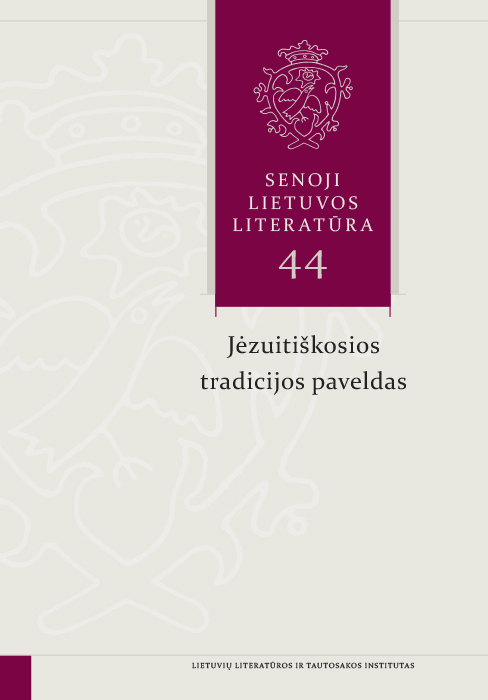Life after Death: Fates of the Jesuits of Kražiai College after 1773 and Former Jesuits
Abstract
The paper is devoted to the fate, both collective and individual, of the Jesuits who were members of the community of the College of Kražiai (including the Mission of Varniai) at the crucial moment of the suppression of the Society of Jesus in 1773. In addition, the activities and lives of the former Jesuits who were active in Kražiai later, are also examined.
The major part of the Jesuit community of the College of Kražiai was dispersed after the official announcement of the suppression of the Society of Jesus had taken place. Most Jesuit fathers and students probably left Kražiai due to the fact that they were newcomers to the region of Samogitia (Žemaitija). Few of them who stayed in Samogitia were of local, Lithuanian or German origin; those who were not indigenes had previously spent at least three years in the mentioned region. Significant disintegration of the Jesuit community in Kražiai was probably hastened by the departure of the last rector of the college. On the contrary, the support of the bishop of Samogitia, Jan Dominik Łopaciński, not only contributed to the retaining of the Jesuit fathers from the mission of Varniai in the region of Samogitia but also attracted other former Jesuits from different places.
After 1773, activities of the former Jesuits in Kražiai were not discontinued, due to the arrival of the other members of the dissolved Society of Jesus. First, the school in Kražiai, subsequently owned by the state Educational Commission, was uninterruptedly administered by former Jesuits for two decades. Secondly, former Jesuits constituted an important part of the teaching staff of the school, and other members of the suppressed Society of Jesus (emeriti, and parish priests) flocked around their ‚colleagues‘. Yearning for communal life, hopes for the revival of the Society of Jesus, continuity of the Jesuit traditions, and maintenance of personal relations prolonged the existence of collective identity of the formally suppressed religious order.

This work is licensed under a Creative Commons Attribution 4.0 International License.
Most read articles by the same author(s)
- Irena Katilienė, Liudas Jovaiša, In angulo cum libello: Traces of Personal Histories in the Notebooks of the Lithuanian Jesuits , Senoji Lietuvos literatūra: Vol. 47 (2019): Senoji Lietuvos literatūra
- Liudas Jovaiša, Sources of Biographical Information on the Members of Catholic Religious Congregations in Lithuania in the Seventeenth–Nineteenth Centuries , Senoji Lietuvos literatūra: Vol. 43 (2017): Senoji Lietuvos literatūra
- Liudas Jovaiša, Correspondence Between Superior General of the Society of Jesus and the Citizens of the Grand Duchy of Lithuania: Subjects and Addressees , Senoji Lietuvos literatūra: Vol. 50 (2020): Senoji Lietuvos literatūra
